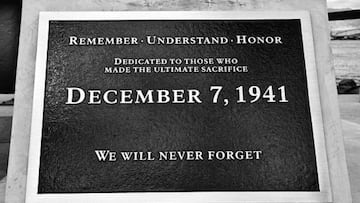Pearl Harbor Day 2025: what time did Japan attack and with how many planes did they use on Dec. 7?
Americans are commemorating the anniversary of the attack on Pearl Harbor by Japanese forces, bringing the US into WW2.

On November 5, 1941, an order was given to attack Pearl Harbor, but the Japanese were told that the fleet could be recalled if negotiations had a favorable outcome. According to Encyclopedia Britannica, the Japanese had assembled a fleet of six aircraft carriers, two battleships, three cruisers, and eleven destroyers.
Although the US was on alert for a possible attack, neither the superiors in Washington nor the Commanders on the island expected an attack from the Japanese forces on the base at Pearl Harbor. The Hawaiian islands lie about 2000 miles from the US and 4000 miles from Japan, leading military planners to expect the Japanese to strike elsewhere. This misjudgment led to the strike being so devastating. Actions to increase the defensive capabilities of the base were not taken, as the fear of sabotage was the bigger worry.
Reconnaissance missions were sent out, but crucially, not to the northwest. A new technology radar had been rolled out, but it was only operational for a few hours in the morning when an attack was most likely. So, when there were warning signs of the raid on the morning of the attack, they were not taken seriously. Two destroyers encountered Japanese submarines, and a radar operator practicing after hours spotted a large squadron of planes. However, he was told by his superiors to disregard it. That morning, a flight of B-17 bombers was expected from the mainland.
How did the attack occur?
“On 7 December 1941, President Franklin D. Roosevelt addressed a joint session of Congress to request a declaration of war. He called this date “a date which will live in infamy.” This was in response to the surprise attack on Pearl Harbor, located on the island of Oahu. The attack began at 7:55 am with almost 170 Japanese planes in the first wave. The first wave was the most destructive, causing damage to virtually all of the American naval vessels, with nearly twenty vessels rendered useless. A second wave attacked at 8:50 am, but a third wave was never sent. The entire battle lasted just one hour and fifteen minutes.
How many casualties were inflicted?
The official American death toll was 2,403, according to the National WWII Museum, including 2,008 Navy personnel, 218 Army service members, 109 Marines, and 68 civilians. The USS Arizona, whose wreckage serves as a memorial to the incident, lost 1,177 souls. The total number of wounded was 1,143, including 710 Navy personnel, 364 Army service members, 69 Marines, and 35 civilians.
Good morning from the USS Arizona Memorial. Pearl Harbor is peaceful this morning just as it was 82 years ago. 24 hours later the United States would be at war. #PearlHarbor82 pic.twitter.com/cn3ulitH1x
— USS Arizona (@USSArizona) December 6, 2023
According to Britannica, the Japanese lost 29 planes, five midget submarines, and possibly one or two fleet submarines during the battle. They suffered fewer than 100 casualties and only managed to take one prisoner. Despite leaving the battlefield without any attacks, they failed to capture the primary target of the operation - America’s aircraft carriers. All three carriers were out of the harbor and couldn’t be located by the Japanese forces. This would allow America to enter the war much sooner than otherwise possible.
What was the importance of the attack?
Before the attack on Pearl Harbor, the United States had been resisting involvement in World War II. However, they had supplied material and aid extensively to the forces fighting against the Axis powers. Following the raid on Pearl Harbor, the United States declared war on 8 December 1941 and fully committed to the war effort. VE Day, which marks the victory in Europe, was celebrated on 8 May 1945. Similarly, VJ Day, which marks the victory in Japan, was celebrated on 15 August 1945.
Related stories
Get your game on! Whether you’re into NFL touchdowns, NBA buzzer-beaters, world-class soccer goals, or MLB home runs, our app has it all.
Dive into live coverage, expert insights, breaking news, exclusive videos, and more – plus, stay updated on the latest in current affairs and entertainment. Download now for all-access coverage, right at your fingertips – anytime, anywhere.

Complete your personal details to comment